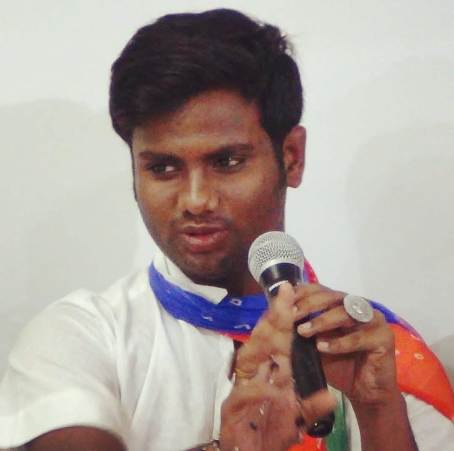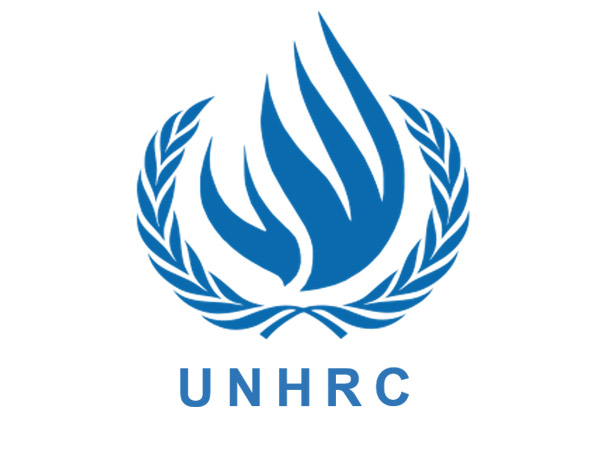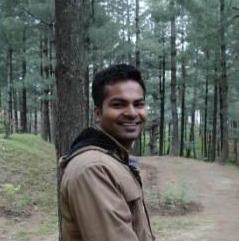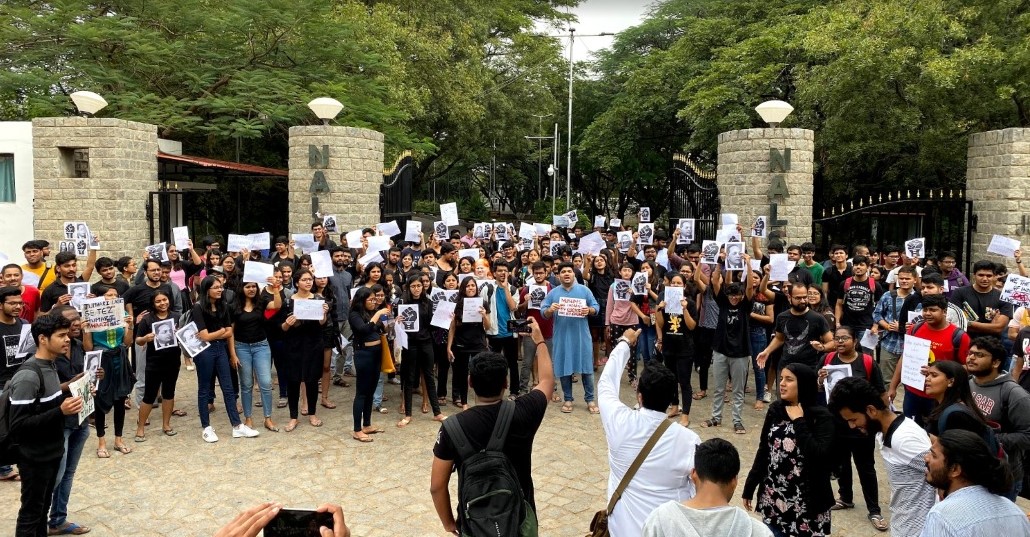Snehashish Das
There has been a new shift in Hindi cinema recently. It is not just to acknowledge caste in their films, but in featuring Dalit characters, as cops. Back-to-back, two films and a web series, Bheed, Kathal and Dahaad – released in cinemas (Bheed), on Netflix (Kathal), and on Amazon Prime (Dahaad)- have Dalit cops protagonists (in fact, ‘the first Dalit cop in a thana’ in all the above-mentioned films). That marks a sort of a new progressive paradigm in Hindi cinema history. They want to shift from portraying a Dalit person as the Kachra character (an outcaste, disabled, uncultured and dirty-looking person) in Lagaan – to a respectable cop character (cultured, able-bodied, well-behaved and well-dressed) person muddled, between their low caste status and high official position.
But this must make us curious: is it a newfound obsession of filmmakers to have a Dalit character as a cop? What about this combination of Dalit+cop that the filmmakers are interested in? Is it to put them into a curious position, i.e., struggling between the system and morality – being a good and bad Dalit simultaneously? Police, as we know, must protect the citizens from violence – but also become the means to violence in the caste context, in the hands of the state, feudal lords, corporates, or general upper-caste masses. And the Dalit remains one of the victim subjects of police violence. Tamil films, from Kaala to Karnan to Jai Bhim, have highlighted this thesis mentioned above. But what must be the agenda behind having Dalit characters as the police? To moralize police or criminalize Dalits, or both? Or is it something more, i.e., to weave a story that fits perfectly into the current day’s progressiveness, to be fed to all kinds of consumers, especially upper-caste liberals and guilt-ridden masses? So, what is that story that needs a Dalit police protagonist? Let me explain how I understood the two films mentioned above and the series.
Bheed and Kathal
Bheed, an Anubhav Sinha directorial film, hit theatres in March 2023, covering many issues including caste, class, gender and the struggle of migrant workers during the Covid lockdown (some of them are inspired by true events, at least, according to news reports I have read, but fictionalized). But there is an ideological push in the fiction part of the film – where the protagonist, Surya Kumar Singh (Tikas), is a Dalit character, and the way the camera moves to show the wounded and diseased bodies, tattered clothes and unliveable conditions of the migrant workers. But who are these migrant workers- of course, some must be from different Bahujan castes, but they and their castes are majorly invisible throughout the film. But the only visible migrant workers are the poor Brahmins (the current day EWS citizens) and the Muslims- their social locations are overtly visible and repeated throughout the film. But on the other side, the castes of the Dalit protagonist (a law enforcer of the state, a police official), and his senior, a Yadav (OBC) officer, are also repeated. In Kathal, a Yashowardhan Mishra directorial released on Netflix in May 2023, the caste of the Dalit+woman+cop protagonist, Mahima Basor, is assertively visible. Along with her, the upper-caste identities of his Dwivedi lover-constable, a Mishra constable, are also repeated.
In both films, the Dalit protagonists’ lovers are upper-caste. And the other phenomenon that is repeated throughout the films is that the upper-cate lovers don’t believe in caste anymore, but their parents will not allow their marriage to their Dalit lovers. So, for the upper-caste lovers’ caste is somewhere else: in family, in society and among the ‘others’, while they remain casteless. They symbolically dissociate from their family, where caste exists, or make their family adjust to the castelessness through some tricks. In Kathal, the Brahmin lover’s (constable) getting promoted to/near to the position of his Dalit lover (who is an inspector) becomes an essential precondition where he can make his family adjust to his castelessness. But it’s not the struggle of the Brahmin man (constable), but of the Dalit woman officer – to get her lover promoted at the cost of her promotion and hard work- despite her lover putting zero effort into it – so that they can marry. But in Bheed, the upper-caste lover, Renu Sharma, not just remains casteless throughout the film but makes conscious efforts to marry her Dalit lover – she is the ideal bar, of castelessness, for upper-caste lovers.
The subtle casteism of the protagonist’s upper-caste lover, in Kathal, manifests several times – he beats up poor (probably, Dalit) persons entering into an elite marriage, doesn’t register cases of lower-caste persons and dismisses their issues as non-important issues. So, the job of civilizing the Brahmin man (her future husband) falls upon the Dalit woman – maybe because she is in a higher official position – or maybe because there is still higher goodness/castelessness in him, that she experiences, despite his subtle casteism. But there is a moment where she polices her upper-caste lover to put efforts into breaking the wall of caste between them and reminds him of her everyday struggle for the same. And from that very moment the upper-caste lover (constable) changes, alas, he does some good work, but out of his humanity and ethics as a policeman or out of his guilt for not being a good lover to his Dalit partner, we don’t know.
But in Bheed, the Dalit cop’s aggression towards poor migrant workers (be it EWS or otherwise) due to his official position is strongly countered by the Brahmin woman lover (who is also a doctor). Perhaps her profession teaches her humanity over her Dalit lover’s profession, or maybe she learns from her Dalit lover’s lived experiences of brutality upon the powerless. She is progressive and sensitive towards poor persons, Dalits and women, and even stands on a higher moral pedestal of progressiveness than her Dalit lover. She reminds the Dalit lover cop of his own morals, i.e., ‘the justice for powerless’ can be achieved by any means, when the Dalit cop doesn’t bother about the beating up of the migrant workers, especially the poor Brahmin migrant worker. She is the real police, if we see both the films together, living the ideals of a lover, a government servant, a moral being, and most importantly, a casteless being.
What is important about both films is their poor upper-caste (EWS) characters. Bheed also has an EWS character and an important character, who is a watchman in the city, Trivedi, who fights out of hunger and becomes a rebel and the leader against police brutality. He upholds the great Brahmin pride and hate against Dalit and Muslims; refuses food offered by Muslims to the hungry people under his watch, beats up the Dalit cop and shows his ‘aukat’/caste status – but also begs the Muslims and the Dalit cop for food out of hunger. He is a perfect victim of the system, of brutal state and police forces, of which the immediate faces are the Dalit and backward caste officers – who declare him a Naxalite due to his rebellion against hunger. He, alas, is a good upper-caste citizen, and even if not so good, he polices the Dalit protagonist (cop) to treat him/them empathetically as they are also the oppressed/victim subjects, and a Dalit cop can also be an oppressor in being a cop. The mash-up of oppression confuses the audience of real-life caste oppression, where Dalits (cops) can be policed by Brahmins (victims, rebels or lovers) and are told how not to oppress.
In Kathal, there are three kidnappers and thieves, whose caste locations are ambiguous but are from working-class communities, as visual hints inform us – who abduct a poor Bahujan woman, Amiya, as part of their criminal activities – and sell her to a ‘pimp’ who is also a Halwai, Gulab Seth. Gulab Seth, can be a Khatri, a Baniya, or maybe just a Halwai, which falls under Bahujan caste communities (a backward caste) and a criminal. The Dalit woman cop protagonist saves the Bahujan girl from the Bahujan criminals with the help of other upper-caste cops (a perfect story to appeal to the liberal upper-caste consumers). At the same time, Mishra (a casteist and misogynist constable) becomes another victim of this abduction drama where the Bahujan/working class persons are the perpetrators – as his stolen and found car gets destroyed. And there is Kunti Parihar, a Rajput woman constable, who is also portrayed as a perfect victim of caste-patriarchy, unlike other Bahujan/working-class women characters. In conclusion, with this recent obsession with Dalit cop drama stories, there has been a process of making a victim out of some poor Brahmins and other upper-caste persons, and a perpetrator out of some working-class or rich Bahujans. This process is another process of humanizing casteist upper-castes and criminalizing the Bahujans. But in the end, both of these categories need humanization (because, supposedly, there is no absolute oppressor).
I also don’t understand why the (Mali caste) family of the kidnapped girl, Amiya, lives outside the village, as one among the outcast families with Dr Ambedkar’s portrait on their wall. Was it ignorance on the part of the filmmakers that made them assume Mali is an ex-untouchable caste, not a backward caste, in Madhya Pradesh, where the film is set – or did they want to portray a Dalit vs backward caste persons’ criminal drama (where they deliberately mistook Mali for an ex-untouchable community)? I will go with the former, i.e., the ignorance of the upper-caste filmmakers. But this Dalit vs backward caste persons story is also portrayed in Bheed, where Yadav (the senior cop) keeps on policing the Tikas (the Dalit and junior cop). And alas, the Dalit cop reminds him of his caste’s lack of privileges, oppression, and counter-polices him to be a hero as well and rebel against the system by helping the powerless, which includes himself.
Dahaad
Dahaad, the Reema Kagti and Ruchika Oberoi directorial, which was also released on Amazon Prime in May 2023 – reinforces the same combination but with unique political correctness that the Hindi cinema industry hadn’t experienced yet. It begins by portraying the Dalit+woman+cop (Anjali Bhatti) as assertive and doesn’t bow down to anyone, not to even her teacher – who breaks away from the guru-shishya relationship. What’s also interesting is that she has a joking relationship with almost everyone in her life, from teachers to seniors at workspaces. The character is built in a way that there is no flaw in her, no political incorrectness. She gives no shit to everyday casteism and misogyny and keeps on asserting in every space in which she could be excluded and humiliated. There is a deliberate emotion of disgust on her face whenever she comes across any casteist or misogynist nonsense. Even her secret situationship with a boy is too politically correct. She is probably the ideal Dalit woman that the Hindi films aspire for themselves to have, and also for the world.
But what’s more ideal is her as a cop – she works tirelessly, for 70 hours straight without sleep, to solve a case. Her job is her life, not just part of it, but all of it. But she is not a cop who will submit to the corruptions and injustices manufactured inside the system; she will make her disgusted face at all of it and do her cop work in seeking justice – as a cop or as a masked vigilante beyond the uniform.
But Anjali Bhatti’s character brings something more to the table, i.e., she isn’t another progressive Dalit woman but the one and only progressive Dalit+woman. Except for Anjali, only her mother is a Dalit character, who is also a woman, among many upper-caste characters. By having a Dalit woman protagonist as lead, the filmmakers did perhaps think of no need to have many different shades of Dalit characterizations – and supposedly to escape the blame of invisibilization or token representation of Dalits in the film. But in the following parts, I’ll explain why Anjali’s characterization was nothing but a token gift to upper-caste consumers, who live in perpetual guilt, and crave a Dalit representation amongst an all upper-caste cast and crew. But let me stick to the previous point- about her mother. Devki Bhatti, the only second declared Dalit woman character, who is a Hindu, seeks solace in Hindu customs and Brahmin’s approvals and consultations for her daughter’s wedding. She stands opposite to her dead husband, who was a cool father who had let her daughter pursue her self-respect and independence in this casteist world. Her character was, perhaps, important for the filmmakers – since there can only be two types of Dalits – one must be progressive and assertive, anti-caste and anti-patriarchy, and another must be regressive, Brahminical and patriarchal – a perfect character combination to send warmth to the upper-caste consumers’ hearts.
Another thing the character of Anjali brings to the table is that other women (upper-caste or Dalits) aren’t as progressively assertive as Anjali. Devki Bhatti is assertive about her motherhood; the wives of Devilal Singh and Kailash Parghi (the cops and the seniors of Anjali Bhatti) are assertive about their right to have reasonable time from their husbands and have a good marital life. But all the above are shown in negative (backward, as Devilal says) light, as both Devaki Bhatti and Shivangi (the wife of Devilal Singh) are outrightly shown as the ones who push their daughters into regressive institutions, away from leading independent lives. But maybe, I’m wrong because Mariam’s anti-caste assertions and maybe Vandana’s assertion about loving another man outside her marriage and getting a divorce from her husband – weren’t that regressive. Nevertheless, Anjali’s character stands ideal as a police official to all the above – she is the benchmark/the police of a good Dalit+woman that none could reach.
But why the characterization of Anjali as a token? I’ll answer the question in one line; because this series is not about her. Even though she is the protagonist, the series is not about her – she has absolutely zero character development throughout the series. She starts as an assertive Dalit+woman+cop and ends as the same (except she changes her surname – which could be at any moment, her caste was apparent to others, and she asserts it throughout the series). Her characterization is reduced to and can be described through only one scene; the one where she repeatedly passes in front of the cabin of an upper-caste (casteist) police officer, and he repeatedly lights holy candles to purify that space and his sight.
I’ll say the series was about three upper-caste characters; 1. the villain, Anand Swarnakar, 2. Kailash Parghi and 3. Devilal Singh. The villain (maybe a backward caste person, as a Sonar/goldsmith) has a history of serial killing. His rationale for killing women (he says they aren’t innocent because innocent women don’t run away and sleep with strangers); his relationship with his murderous father; his brother who is just too perfect in his father’s lens and who he is jealous of; his wife who he knows is cheating on him from the beginning and acts as if he doesn’t; his son; many ‘non-innocent’ middle-class women and his profession and brilliance as a teacher – a convoluted characterization – is what the series is about. Another interesting thing to note on the character Anand Swarnakar, i.e., Vijay Verma, the actor who plays the role starred in a casteist and anti-reservation propaganda film, Hurdang, in 2022. And he got the opportunity to star in a supposedly anti-caste film this year. Here, we must question the caste network in the film industry, where the same people sell both openly casteist and supposedly anti-caste films to appease every kind of audience.
Similarly, Devilal Singh, is a cool father and a cop but an uncool husband – despite being an upper-caste man- free from casteist and patriarchal ideology and behaviour – this is what the filmmakers subtly wanted the audience to consume and appreciate. But this goes to an extreme in the case of Kailash Parghi – a casteist and patriarchal man who has a previous history of taking bribes, doesn’t take the missing case of a low-class person’s sister, is jealous of Anjali (the Dalit woman cop), doubts her merit, remains the pet of saffron-clad (replaced by yellow) Thakur goons, and corrupt to an extent he immediately criminalizes Muslims and put their life into risk – change. The filmmakers did their best to weave the character of the good upper-caste man and the possible good upper-caste man, and infuse it into the popular psyche. It’s an easy miss by everyone. What’s an easier miss is that the character of Parghi is a perfect victim of this cruel world – he doesn’t want to bring a child into this messy and dirty world. There is a moment of his anxiety, right after he gets an apology from Anjali for not respecting him enough, where he decides not to be another criminal/cruel person in this cruel world, but be a better man, a better husband, a better cop and a better upper-caste (or casteless) person – to protect the rights of Dalits, women, Muslims and low-class people.
This series is about him as well. Hereby, I don’t wish to deny that the upper-caste persons aren’t subjected to change or become good persons, but through characterization such as of Parghi, the filmmakers try to limit caste to behaviour, and anti-caste practices to behavioural change/good behaviour. A pattern is built that all well-behaved people or those who changed to behave well, in a casteless or non-casteist sense, are not materially very well off. Unlike those who are outrightly casteist in their behaviour (they possess ancestral wealth and other materials). This also, in another sense, speaks to us that a good upper-caste has nothing (materials) as such to give up except just being behaviourally good as an anti-caste practice. With all the above, the protagonist is only the token, but the series is about all the above upper-caste men’s characterization, their coolness, victimhood, heroism and villainess.
But should we welcome such cinema? I would answer in the negative. I will ask a referential question which would explain my position on why such films cannot be welcomed. Anubhav Sinha confessed that the manual scavenger character/cast in his previous film, Article 14, was actually a manual scavenger. So, my question is: if a manual scavenger character can be a real manual scavenger, what stopped him and other upper-caste filmmakers from having a Dalit person play a Dalit protagonist? What stops the industry from making movies on the so-called ‘Dalit issues’ and employing Dalit directors, writers, cast and crew? What is the caste nexus that limits Dalit actors to only manual scavenging roles?
~~~
Snehashish Das (mx.snehashish@gmail.com) is a PhD scholar of Sociology at the Centre for the Study of Social Sciences, Jawaharlal Nehru University.










